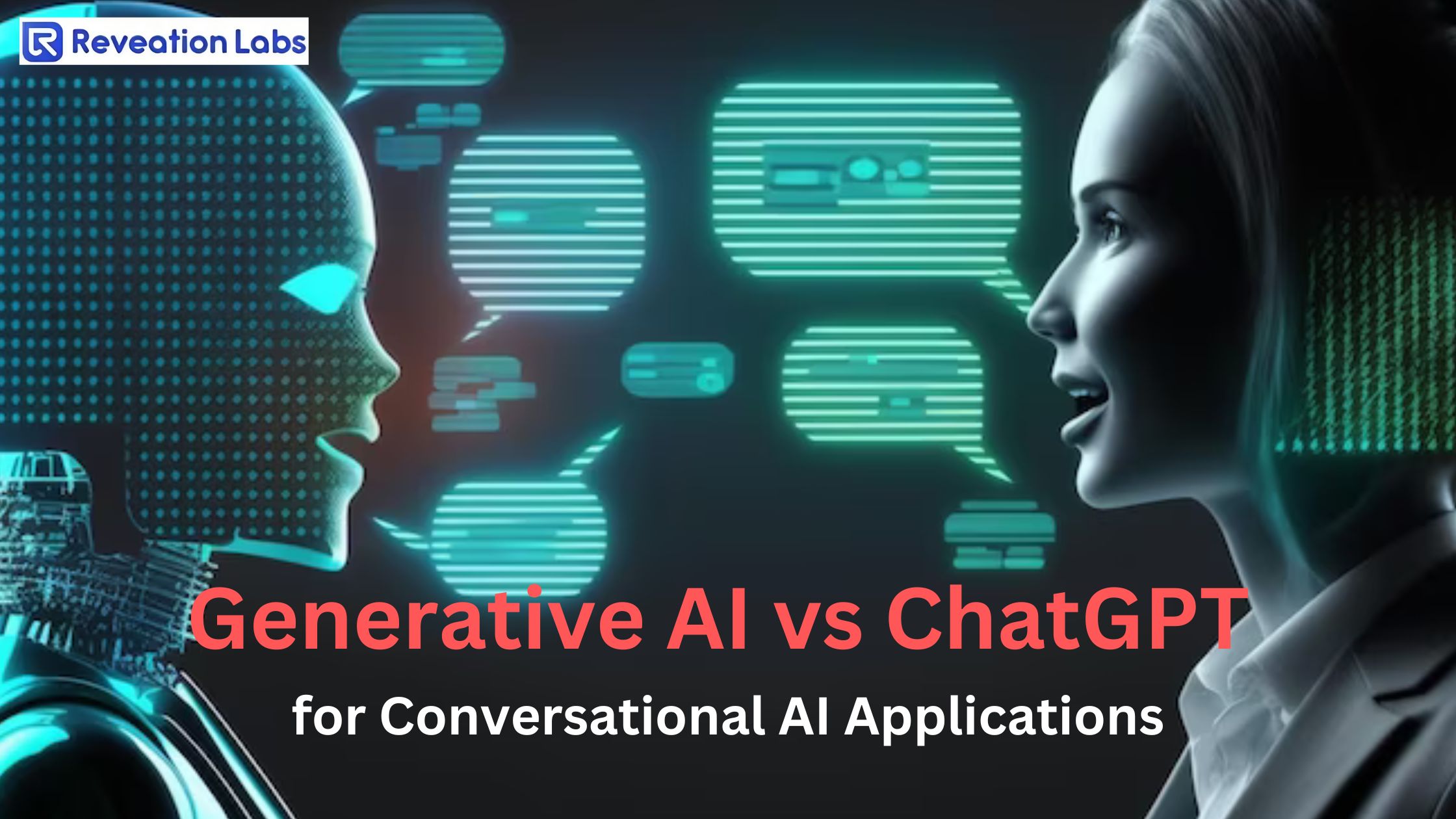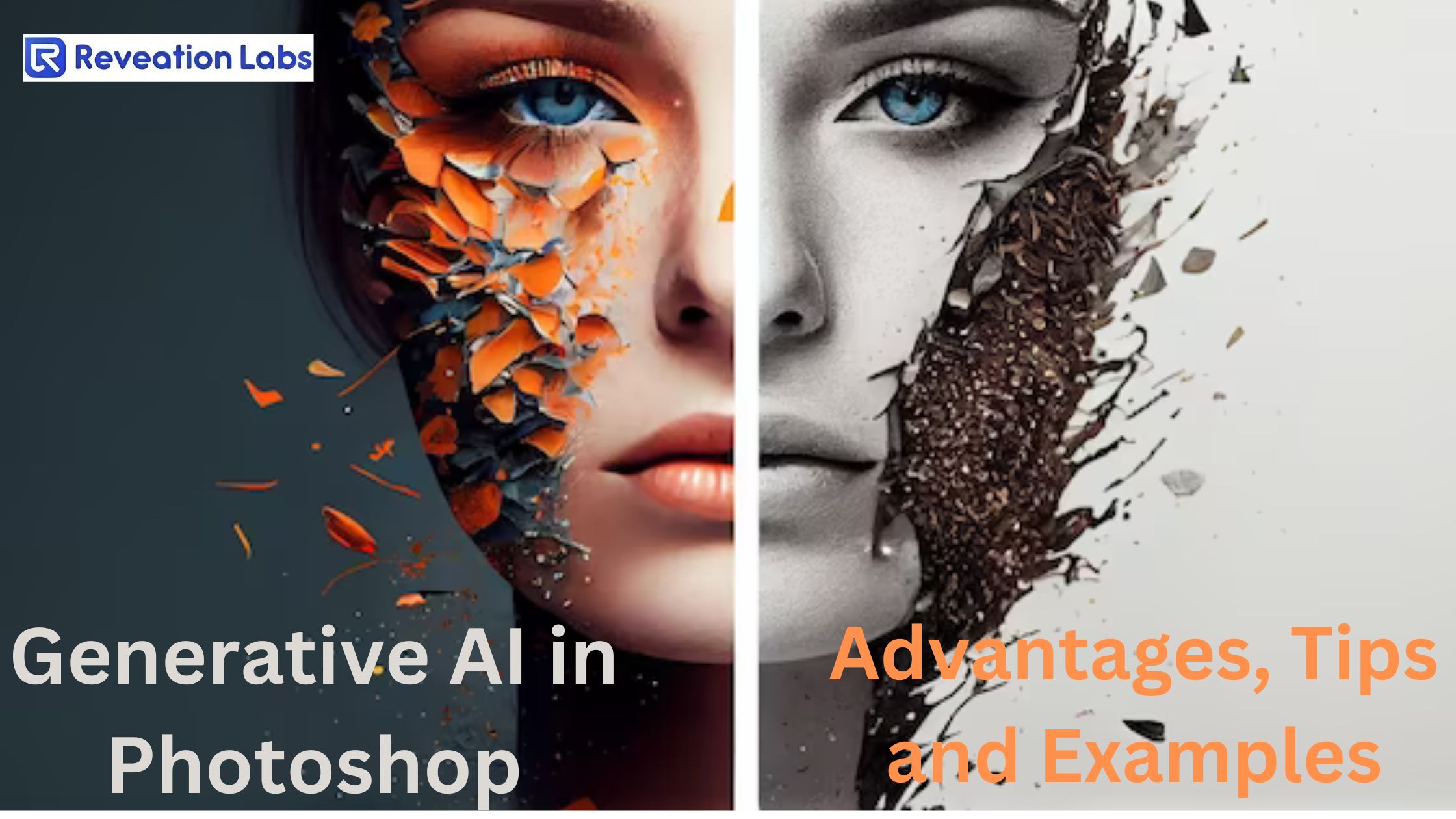Divya Nautiyal
Thu Dec 21 2023


Are you ready to unlock the power of Conversational AI applications? In the ever-evolving world of artificial intelligence, two prominent technologies that are driving the conversation are Generative AI and ChatGPT. But what sets them apart?
Generative AI and ChatGPT are both revolutionary approaches to Conversational AI, but they have distinct characteristics that make them suitable for different applications.
Generative AI, as the name suggests, focuses on the generation of new content. It uses complex algorithms to create original responses, making it ideal for scenarios where creativity and originality are crucial. On the other hand, ChatGPT is designed to mimic human conversations and relies on extensive pre-training and fine-tuning. This makes ChatGPT more adept at understanding context and providing contextually relevant responses.
Understanding the differences between Generative AI and ChatGPT is essential for businesses looking to leverage Conversational AI. By decoding these technologies, you can identify which one aligns best with your specific needs and use cases. So, whether you're looking to develop virtual assistants, chatbots, or interactive customer support systems, this article will guide you through the intricacies of Generative AI and ChatGPT, helping you make informed decisions for your Conversational AI applications.
Contents Covered in this Blog
Understanding generative AI for conversational AI applications
Exploring ChatGPT for conversational AI applications
Generative AI vs ChatGPT: A comparison
Use cases for generative AI in conversational AI applications
Use cases for ChatGPT in conversational AI applications
Benefits and limitations of generative AI in conversational AI applications
Benefits and limitations of ChatGPT in conversational AI applications
Choosing the right approach for your conversational AI project
Conclusion: Leveraging generative AI and ChatGPT for conversational AI success
Understanding generative AI for conversational AI applications
Generative AI, as the name suggests, focuses on the generation of new content. It uses complex algorithms to create original responses, making it ideal for scenarios where creativity and originality are crucial.
Unlike rule-based systems that rely on pre-defined responses, generative AI can generate unique and contextually appropriate answers. This ability to generate new content makes it invaluable for applications such as virtual assistants, chatbots, and interactive customer support systems.
The underlying technology behind generative AI involves deep learning models that are trained on vast amounts of data. These models learn the patterns, structures, and nuances of human language, enabling them to generate responses that closely resemble those of a human.
Generative AI can understand context, analyze user intent, and provide detailed and relevant answers. With the advancements in natural language processing and deep learning, generative AI has become more sophisticated and is continuously improving its ability to generate high-quality responses.
Generative AI has various use cases in conversational AI applications. It can be used to develop virtual assistants that can engage in meaningful conversations, providing users with personalized and contextually relevant information.
Generative AI-powered chatbots can handle complex queries, provide product recommendations, and guide users through the customer journey. Interactive customer support systems powered by generative AI can offer real-time assistance, answering customer queries and resolving issues efficiently. These applications highlight the versatility and potential of generative AI in enhancing customer experiences and streamlining business operations.
Exploring ChatGPT for conversational AI applications
While generative AI focuses on generating new content, ChatGPT takes a different approach. It aims to mimic human conversations by leveraging extensive pre-training and fine-tuning. ChatGPT is built upon the GPT (Generative Pre-trained Transformer) architecture, which has proven to be highly effective in various natural language processing tasks.
ChatGPT's pre-training involves exposing the model to a massive amount of internet text, allowing it to learn grammar, facts, and even some reasoning abilities. This pre-training phase equips ChatGPT with a broad understanding of language. However, to make it more suitable for conversational AI applications, fine-tuning is performed. During fine-tuning, the model is trained on specific conversational datasets to improve its responsiveness and context awareness.
The advantage of ChatGPT lies in its ability to understand context and provide contextually relevant responses. It can maintain coherent conversations, ask clarifying questions, and generate human-like answers. This makes it highly suitable for applications that require engaging and interactive conversations, such as virtual assistants, chatbots, and language tutoring systems.
Generative AI vs ChatGPT: A comparison
While both generative AI and ChatGPT have their strengths, they differ in their approach and capabilities. Generative AI focuses on generating original responses, while ChatGPT aims to mimic human conversations. This fundamental difference has implications for their use cases and performance.
Generative AI excels in scenarios where creativity and originality are crucial. It can generate unique and contextually appropriate responses, providing a personalized and engaging experience for users. However, the generated responses may not always be coherent or contextually accurate, as the model relies solely on learned patterns and does not possess deep understanding or reasoning abilities.
On the other hand, ChatGPT's strength lies in its ability to understand context and maintain coherent conversations. It can ask clarifying questions, provide relevant answers, and engage users in interactive dialogue. ChatGPT's fine-tuning on conversational datasets enables it to generate more contextually appropriate responses compared to generative AI. However, it may still exhibit occasional inconsistencies or produce incorrect answers due to limitations in its training data or preconceived biases.
Also Read: Generative AI in Linguistics: Applications and Benefits
Use cases for generative AI in conversational AI applications
Generative AI has a wide range of applications in conversational AI. One prominent use case is virtual assistants. Generative AI-powered virtual assistants can provide personalized responses and engage in meaningful conversations with users. They can understand user intent, answer queries, and perform tasks such as setting reminders, providing weather updates, or recommending restaurants.
Generative AI is also valuable in developing chatbots for businesses. These chatbots can handle complex queries and provide detailed information about products or services. They can guide users through the customer journey, assist with troubleshooting, and even facilitate sales by offering personalized recommendations. Generative AI-powered chatbots enhance customer experiences by providing accurate and relevant information promptly.
Another use case for generative AI is interactive customer support systems. These systems can communicate with customers in real-time, answering their queries and resolving issues efficiently. Generative AI-powered customer support systems can handle multiple queries simultaneously, provide consistent responses, and escalate complex issues to human agents when necessary.
Use cases for ChatGPT in conversational AI applications
ChatGPT's ability to mimic human conversations makes it suitable for various conversational AI applications. Virtual assistants powered by ChatGPT can engage users in interactive dialogue, answer questions, and provide guidance. They can maintain coherent conversations, understand context, and generate responses that closely resemble those of a human.
ChatGPT can also be utilized in chatbots for ecommerce businesses. These chatbots can interact with customers, provide product recommendations, and assist in making purchases. ChatGPT's contextual understanding and conversational abilities enable it to offer personalized and engaging experiences, enhancing customer satisfaction.
Language tutoring systems can also benefit from ChatGPT's capabilities. ChatGPT can act as a language learning companion, engaging in conversations with learners, providing feedback, and facilitating practice. Its ability to generate human-like answers and ask clarifying questions aids in creating an immersive language-learning experience.
Benefits and limitations of generative AI in conversational AI applications
Generative AI offers several benefits for conversational AI applications. Its ability to generate original responses allows for personalized and engaging interactions with users. Generative AI-powered virtual assistants and chatbots can provide contextually appropriate information, enhancing user satisfaction. Additionally, generative AI can handle open-ended queries and adapt to evolving user requirements, making it versatile and adaptable.
However, generative AI also has limitations. The generated responses may not always be accurate or contextually appropriate, as the model relies solely on learned patterns. Generative AI may struggle with complex or ambiguous queries, and it may exhibit occasional inconsistencies in its responses. Furthermore, generative AI models require significant computational resources and training data, which can be a challenge for some organizations.
Suggested: How ChatGPT Developers Can Transform Your Business?
Benefits and limitations of ChatGPT in conversational AI applications
ChatGPT offers several advantages for conversational AI applications. Its ability to understand context and maintain coherent conversations enables it to provide contextually relevant responses. ChatGPT can engage users in interactive dialogue, ask clarifying questions, and generate human-like answers, creating a more immersive and natural conversational experience.
However, ChatGPT also has limitations. It may occasionally produce incorrect or nonsensical answers, as it relies on pre-training on vast amounts of internet text. ChatGPT's responses can be influenced by biases present in its training data, leading to biased or inappropriate answers. Additionally, ChatGPT may struggle with nuanced or complex queries that require deep understanding or reasoning abilities.
Choosing the right approach for your conversational AI project
When choosing between generative AI and ChatGPT for your conversational AI project, it's essential to consider your specific needs and use cases. If creativity and originality are crucial, and you can tolerate occasional inconsistencies, generative AI may be the right choice. On the other hand, if maintaining coherent conversations and context awareness is important, and you prioritize accurate and relevant responses, ChatGPT may be the better option.
It's also important to evaluate the availability of resources and training data. Generative AI models require substantial computational resources and extensive training data to achieve optimal performance. If you have limited resources or training data, ChatGPT's pre-trained architecture may be more suitable.
Ultimately, the choice between generative AI and ChatGPT depends on your project requirements, priorities, and available resources. It's advisable to experiment and evaluate both approaches in a controlled setting before making a final decision.
Must Read: Top Generative AI Trends in 2024
Conclusion
Generative AI and ChatGPT are powerful technologies that can unlock the potential of Conversational AI applications. While generative AI focuses on the generation of new content, ChatGPT aims to mimic human conversations. Understanding the differences between these two approaches is crucial for businesses looking to leverage Conversational AI effectively.
Generative AI excels in scenarios where creativity and originality are crucial, making it suitable for applications such as virtual assistants, chatbots, and interactive customer support systems. On the other hand, ChatGPT's contextual understanding and conversational abilities make it valuable for applications that require engaging and interactive conversations.
Why Reveation Labs
We are a team that is technically proficient and simultaneously caring for your business. Our ideology is to provide the latest technologies that suit your business well.
Let’s discuss your requirements!
Give your business the next-gen technology it deserves. Be a part of our family of successful enterprises that work on high-end software solutions.
Experts
In all the latest technologies and developments.
Creative
To innovate the best solutions and pick the right technology for you.
Ethical
To always put you first & respect your business values and procedures.
Dedicated
To meet the deadlines and help you until the very end and beyond.
Approachable
For all your business needs and queries at any point of time.
Transparent
In our ways of working.



